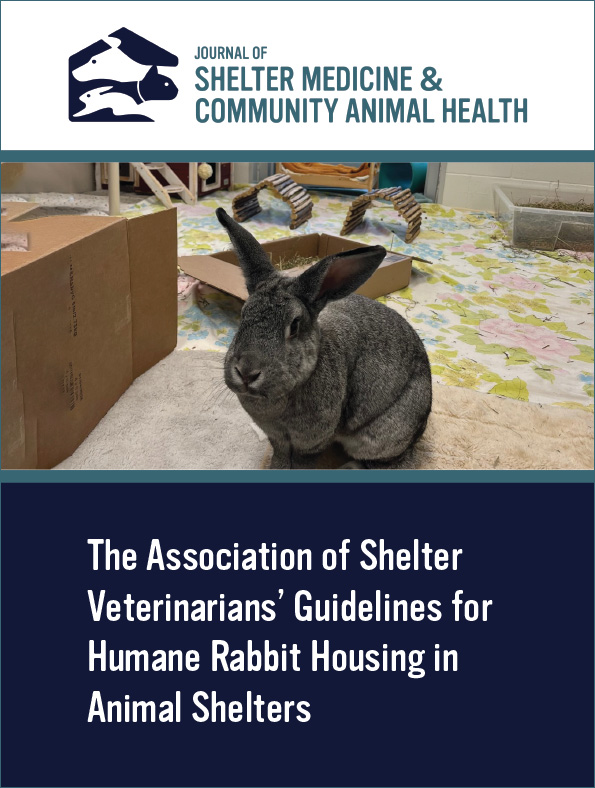The Association of Shelter Veterinarians (ASV) has released the first-ever Guidelines for Humane Rabbit Housing in Animal Shelters, setting a new standard for rabbit welfare.

An epic undertaking over three years in the making, the guidelines are based on a comprehensive review of the available scientific research and the combined experience of nearly two dozen rabbit care, facility design and shelter medicine experts. UC Davis Koret Shelter Medicine Program (KSMP) Director Dr. Kate Hurley, KSMP Outreach Veterinarian Dr. Chumkee Aziz and KSMP alumna Dr. Becky Stuntebeck contributed to the guidelines.
Dr. Hurley shared, “It’s so exciting to see this document cross the finish line. We know from experience with cats and dogs that getting housing right in the shelter lays the foundation for so much more. Rabbits deserve their very own guidelines!”
As the report notes, “the consequences of getting shelter housing right can be profound for animals and people alike, while poor housing can be costly and stressful at best, and deadly at worst.” Housing rabbits in shelters is particularly challenging for a number of reasons, including their relatively recent domestication and their entry into an animal shelter system that was not designed to accommodate their needs. Rabbits’ length of stay is generally longer than that of other species, and they are especially sensitive to stress and environmental change, making appropriate housing crucial to their well-being.
The guidelines cover general facility considerations like lighting, noise control and air quality; enclosures, both individual and group play areas; special populations like babies, seniors and pregnant rabbits; sanitation; and infectious disease management and mitigation.
The guidelines were published in the Journal of Shelter Medicine and Community Animal Health (JSMCAH), an independent online journal published by the Association of Shelter Veterinarians.
View and download the guidelines at https://jsmcah.org/index.php/jasv/article/view/149
